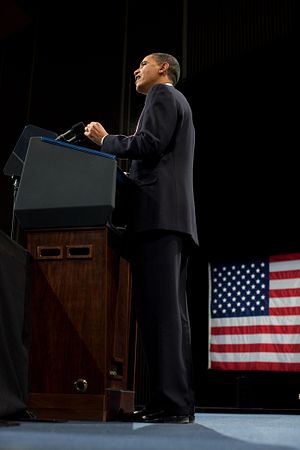Editor’s Note: This is the first article in a two-part series on U.S. strategy and statecraft. The second article, which focuses on statecraft, can be found here.
Recently, foreign policy watchers have been engaged in a frantic bout of hand-wringing over whether America will continue to play the role of global leader. Amid that discussion, however, a much more practical dilemma has crept up. President Obama articulated the quandary in his West Point address: “The question we face… is not whether America will lead but how we will lead.” (Italics added.)
The question reflects the current state of the world. Today’s security environment has no precedent. The sheer volume and complexity of current and emerging security threats, and their interrelationship, creates daunting challenges for the country. We call this the era of “compounding complexity,” defined as an environment where the challenges for policymakers grow exponentially rather than simply by addition, as complex trends interact with one another.
The United States is not in decline and should continue to lead the world. But it needs to radically reshape the way in which it meets today’s challenges, particularly as traditional foreign policy approaches no longer generate the same results. Forging a new model for U.S. global leadership – a new ‘how’ — will require confronting five core strategic challenges.
First, America must cope with a growing diversity of actors and adversaries. The United States must manage rising state competitors whose actions can sometimes undermine global stability even as it addresses threats emerging from smaller states, non-state actors and transnational threats like terrorism and cyber crime. During the Cold War and before, competition focused on great powers. Following the Cold War, the focus shifted to other actors. Today, both groups pose sustained challenges to U.S. interests and values, requiring action across a number of disparate dimensions simultaneously.
Second, many of these diverse actors either have or are pursuing a variety of asymmetric capabilities and/or are employing asymmetric tactics designed to thwart U.S. conventional military advantages. These capabilities include: Chinese anti-ship missiles, Iranian cyber capabilities and North Korean nuclear weapons. Tactics include terrorism and insurgency, as well as the types of coercion strategies China employs in the South and East China Seas. Both target the soft underbelly of American military dominance.
Third, the foundations of the post-WWII international order have begun to erode as emerging actors challenge both the institutions and values on which that order was built. The institutions whose membership and voting allocations reflect the post-war world order – including the IMF, the World Bank and the UN Security Council — have become structurally anachronistic and must be updated to remain relevant. Perhaps more consequential, adherence to the values that undergird the order, such as Westphalian notions of sovereignty, are evolving in both positive ways, such as the Responsibility to Protect doctrine, and negative ways, such as Russia’s reversion to land grabs in Crimea.
Fourth, America’s vast network of allies and partners is under strain as the strategic rationales for historic partnerships fade and emerging powers chart their own geopolitical courses. This network constitutes a major strategic asset for the United States, but nearly all of the relationships were built to fight the Cold War and today face new challenges, ranging from resource constraints to capability gaps. Re-casting these ties in ways that take into account new realities and deepening global partnerships will be essential to maintaining U.S. leadership.
Fifth, the lines between domestic and foreign policy have blurred. Events of the last decade have underscored how strength at home and strength abroad remain deeply intertwined. Recently, the two have been mutually detrimental rather than mutually supportive. The high costs of Iraq and Afghanistan, combined with the financial crisis, increasing federal debt and partisan gridlock, have blunted U.S. power in both domains. Policymakers must chart a course that mirrors the previous model where actions abroad bolstered success at home and vice versa.
Meeting these challenges will be daunting, and will require new and revitalized tools of American statecraft in addition to updated strategies. But in figuring out how to lead, the question of whether to lead will likely answer itself.
Julianne Smith is senior fellow and director of the strategy and statecraft program at the Center for a New American Security. Previously, she served as deputy national security advisor to the vice president. Jacob Stokes is the Bacevich Fellow at CNAS. This piece is based on their new CNAS report, “Strategy and Statecraft: An Agenda for the United States in an Era of Compounding Complexity.”

































